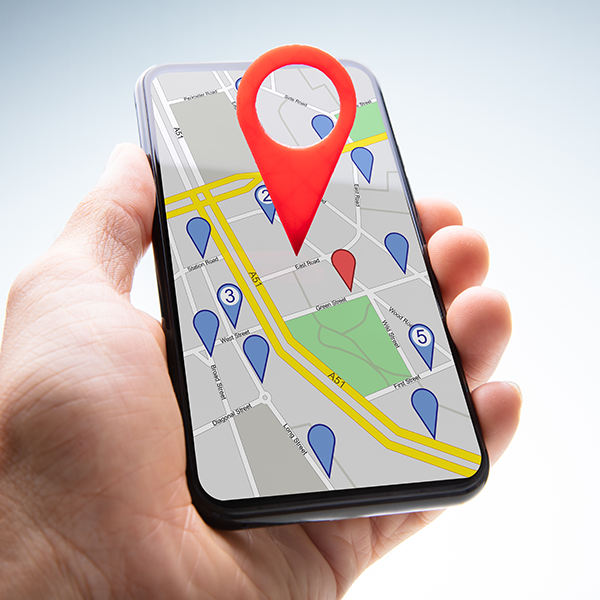Mobile Web: Hope or Hype

A February article by Joel Garreau in The Washington Post cites this statistic: “From essentially zero, we’ve passed a watershed of more than 3.3 billion active cell phones on a planet of some 6.6 billion humans in about 26 years. This is the fastest global diffusion of any technology in human history — faster even than the polio vaccine.”
Mobile Web Usage
The single most popular application to date for mobile devices is SMS text messaging — over six billion were sent in the U.K. alone in December of 2007, according to the Mobile Data Association. That’s more than 193 million per day. In February, research firm Research And Markets predicted over two trillion will be sent worldwide in 2008.
But there are plenty of other, more advanced applications for the mobile Web, ranging from the quirky to the practical. Vodafone’s Otello is a search engine that works by sending a photo taken with your mobile device, then receiving relevant information regarding the image that was sent. GeoPedia uses an iPhone’s positional data to find your approximate location and then sends Wikipedia articles about points of interest around you at that moment. GyPSii uses GPS, user-generated content, social networking capabilities, photo and video sharing and geo-tagging to instantly connect and track people all over the world. Twitter has already seen wild success in the mobile space by answering the question “What are you doing?” It’s essentially a way for people to follow each other’s daily or even hourly activities through a network of friends. Some swear it’s a great networking and marketing tool, while others see it as an enormous waste of time.
Clearly the mobile Web is growing into an everyday utility. But is it a viable business opportunity?
Google seems to think so. They have set aside $10 million for a contest for outside developers to create mobile applications. And Google is hardly alone. In February, AOL announced plans for a mobile development platform using an SML-based markup language with the intent to run on any mobile device. Even traditional media are getting in the game. Hearst Publishing (Cosmopolitan, Esquire, O., et al.) joined Nokia’s ad network, essentially giving advertisers access to more than 100 million subscribers. Research firm Gartner predicts that worldwide mobile advertising revenue will balloon from $1 billion in 2007 to $11 billion in 2011.
But there are some serious questions surrounding the viability of the mobile Web. And the biggest of all is, when? It seems that every year is proclaimed as the year of the mobile Web. But it has yet to happen. Slow (if any) connections, lagging load times, tiny screens, unrealistic business models and most of all, lack of user interest have plagued the industry from day one.
Mobile Expectations
What are Web professionals to do? That depends on what users prepared to do. Is it realistic to expect consumers to make purchases or transfer money through a mobile device? Security remains a top concern among mobile users. Something about sending important, personal data over a wireless connection through something as easily misplaced as a telephone doesn’t sit right with many consumers.
Also not to be overlooked is the personal connection between users and their mobile phones. People have come to embrace the mobile device as an extension to their everyday lives. It’s no surprise that surveys consistently show users don’t take kindly to advertisements invading their mobile space. This has made many advertisers wary of entering this uncharted territory.
For Web professionals, the mobile Web presents some challenges, along with serious potential. It has become more critical than ever to have your company and website listed prominently in local directories – where one of the top utilities for mobile Web surfers is searching for local businesses, directions, hours of operation and telephone numbers. Included in many of these searches is critical information about your business. With Google Local, for example, users can read reviews and leave comments, in addition to getting directions and telephone numbers, all from Google Maps. In the same way, it’s important for your website to rank highly in search engines — perhaps even using paid mobile advertising to draw traffic. The reason is that the third screen is still small for most mobile users, meaning a limited number of results will show on the first page. And mobile users rarely go beyond the first page of results.
Emerging technologies present some other interesting opportunities. 2D bar codes allow a company to print a UPC-like image on virtually any surface — a poster or magazine page, for example. In response to some enticement, users snap a photo of the bar code with their mobile device, send the photo to your website where it is decoded and the appropriate information is sent back to the user. The idea is to engage users into a “pull” initiative, where people are drawn to request more information, rather than having it forced upon them — a very useful tactic for a personal device.
So is the mobile Web finally upon us? And will it become the next great business avenue? There are plenty of arguments for and against it. Read on to explore a few of them.
Evolving Devices and 3G
These days, just about every mobile device can connect to the Web, but speed and overall usability vary widely. Third generation (3G) technology aims to up the usability factor for all mobile devices — promising faster connections and the ability to transfer large amounts of data in order to bring the mobile experience closer to browsing by PC. According to a January report from Forrester Research, three in five mobile users will have signed up to 3G by the end of 2010. The same report found that the UK and Italy will lead the way with 3G penetration rates of 68 percent and 72 percent, respectively.
Along with 3G technology we’re seeing major advancements in mobile devices and therefore, usage of the mobile Web. Of course, no discussion about mobile devices and the Web is complete without mention of the iPhone. Love it or hate it, the iPhone has changed the game — both in mobile Web usage and the standard by which all future mobile devices will be measured. In March 2008, M:Metrics, a leader in mobile media measurement released the findings of a survey showing a staggering 85 percent of iPhone users regularly access content on the Web, compared to 58 percent of smartphone users and just 13 percent of overall mobile phone users. The same study found 59 percent of iPhone users visited a search engine, compared with 37 percent of smartphone users and a miniscule 6 percent of overall mobile phone users. This corroborates information Google released in February that saw on average 50 times more search requests coming from Apple iPhones than any other mobile handset.
These numbers and the fact that the iPhone has quickly become one of the top-selling mobile devices in under a year of circulation suggest that consumers are ready to start connecting to the mobile Web. All they need are a proper connection and the right equipment. Manufacturers are now scrambling to release iPhone competitors, and some are already finding success. A joint effort by Sprint and Samsung has resulted in Instinct, a new device that recently won Best in Show in the Emerging Technology Award competition at CTIA Wireless 2008 in Las Vegas. Instinct has many of the same features as the iPhone and even a 2.0 megapixel camera. In the meantime, Apple is set to release the second generation of the iPhone this summer, which promises greater capability, memory and a high price tag — inevitably one of the factors keeping new devices from expanding usage of the mobile Web even farther.
Limited Devices and Slow Development
Third generation, fourth generation, fifth generation — technology is never going to stop evolving, so it might end up that the devices that we carry everywhere with us will end in their current manifestation as we know and understand them – mostly used for simple communication and the occasional weather forecast. What users do with their mobile devices should not surprise anyone, and it hasn’t changed much in the past several years. A 2007 M:Metrics study of overall mobile phone users found that while 73 percent sent text messages, only 7 percent had browsed news and information on the Web.
The strongest argument for the mobile Web has not changed: when the owners of the world’s mobile phones get online their numbers will vastly outweigh the number of mobile PCs accessing the Internet; therefore, the market will tilt in the direction of mobile. The problem is that these users have not yet connected to the Internet in big numbers and, for those who do it's only on occasion and for very specific reasons and very limited amounts of time. For example, in the past week, how many times have you searched Yahoo on your mobile? Compare that with how many times in the past week you searched Yahoo from your PC. Take into account proxy data charges and slow speeds today and you start to see the clear picture of why genuine adoption has been so slow. Users have not yet become accustomed to using their devices to their current but limited potential. Even when they do, the overall experience leaves much to be desired – both from the connections and the limited capabilities of the overwhelming majority of devices in circulation.
Smartphones are a reality and the advent of the iPhone did open up new possibilities and show consumers the potential of the mobile Web. But technology keeps us continually moving forward and you can bet that there will be casualties. The openness of Android will take years to be realized and the same goes for the iPhone Software Development Kit (SDK). Developers are only starting to build applications that will bring the mobile Web to fruition. Let's just hope that happens before another device comes out that changes how we think about the mobile Web ... again.
Mobile Markets and Sheer Numbers
Numbers can be deceiving, but sometimes hard to ignore. When it comes to mobile statistics, some of the data are simply astonishing.
According to Gartner Research, mobile phone sales topped 1.15 billion units in 2007, contributing to a total of 3.3 billion handsets worldwide – or half of the world’s population. Of course, a fraction of those are suitable for mobile Web use. However, if iPhone sales are any indication of mobile Web adoption, the stage is set for a virtual revolution. Over 4 million iPhones were sold within the first six months of production, 2.3 million of which sold in the last quarter of 2007 alone. As the Web is truly a global presence, it is important to look at mobile adoption as a whole. India is the fastest growing mobile market and has claimed second place next to China as the world’s most mobile nation. According to the Telecom Regulatory Authority of India (TRAI), more than 8 million subscribers were added in October 2007, bringing the total to more than 250 million — and that number is expected to double by 2011.
Of course the mobile Web doesn’t exist without proper coverage. Increasingly, networks are providing coverage at major community hubs (yes, Starbucks included) and some U.S. cities are still attempting to provide free WiFi access across the board. Many mobile carriers have started to introduce flat-rate mobile packages, including unlimited data transfer essential to widespread mobile Web browsing. The Global System for Mobile communications (GSM) is the current, and for some the only method of connecting to the mobile Web and has a reported coverage of around 80 percent. According to the GSM Association, mobile penetration is expected to reach 90 percent by 2010.
Developing countries present an interesting dynamic. Reaching these populations presents a challenge for marketers and advertisers, even though they represent some of the fastest growing markets. While many of these regions may lack the technology (or resources) available to much of the mobile world, they also represent one of the most captive audiences. Many developing nations’ residents don’t have access to a PC, leaving the mobile device as their only way to connect to the Internet. Such is the case for MyGamma, a social network run by BuzzCity. Based in high-tech Singapore, they draw most of their 2.5 million users from developing nations in Asia and Africa.
In the end, the mobile space is seeing unprecedented growth and penetration. The numbers are enough to catch anyone’s attention and the opportunity is simply too great for marketers, carriers, manufacturers and developers — and yes, website professionals – to pass up.
The Current Mobile Web is Not the Future
One cannot argue against the pervasion of mobile devices and technology into all corners of the world. It’s theoretically true that a farmer in rural Bangladesh is able to access the mobile Web in the same way as a teenager in Tokyo. However, the mobile Web represents two very different things for its respective users.
While the teenager might be watching video, snapping photos of 2D bar codes or downloading a new hit song, the farmer might just as likely be simply checking the week’s weather, reading email or looking for the day’s closing numbers on rice futures.
One of the dangers this presents is a mobile digital divide. Those with the resources to obtain the latest devices and the data packages needed to run them will see a version of the mobile Web consisting of advanced functionality – streaming video, social networking, e-commerce functionality, etc. It’s less likely that a rice farmer will purchase merchandise from Amazon.com or order theatre tickets from his phone. Therefore, marketers and investment dollars will funnel to early adopters and high-end consumers, leaving a neglected and archaic mobile Web to the rest.
Adding to the problem are the devices themselves. The iPhone has shown that the familiar PC-based browsing experience can translate to a device without the need for specialized pages and websites. And what we’ve seen is only the beginning. As devices improve, the need for a separate, mobile Web begins to disintegrate. That’s significant, as the millions of dollars currently pouring in for mobile applications and websites will one day no longer be necessary.
While the lucky owners of advanced devices will be accessing a ubiquitous Internet, those without the latest technology will likely see specialized mobile pages and services slowly disappear, increasing the divide. Developers will certainly create applications better suited to developing nations and their users, but that runs the risk of creating an entirely separate mobile Web and mobile economy, making trade and commerce difficult between the two mediums. In short, the current iteration and projected omnipresence of one mobile Web and its applications are not sustainable.
Mobile Applications
If there’s a current battleground for the mobile Web, the arena is in the applications. Developers are rolling out new applications as fast as they can generate ideas. Everything from mobile social networking and GPS-enabled services to music downloading, mobile games and video streaming are vying for users’ attention.
However, it seems that some of the most widely adopted mobile applications are the simple ones. Several manufacturers including Blackberry, Nokia and Apple have the ability to place a Google search box directly on a user’s home screen, negating the need to open a browser, navigate to Google, then enter a search query. Some of the most visited sites on the mobile Web are quick hits — like CNN.com for news headlines, ESPN.com for sports scores or Accuweather.com for weather updates.
Yahoo jumped head-first into the mobile fray, forming several strategic partnerships with carriers and recently superpages.com, while working hard to make a strong first impression with the mobile audience. "Just like they were a Web 1.0 leader, now they're a mobile 1.0 leader," says Canaccord Adams analyst Colin Gillis.
Perhaps one of Yahoo’s most promising applications is voice-enabled search and commands with OneSearch 2.0. A recent demo at CTIA Las Vegas showed a voice command of “British Airways 287” returning arrival times, “March Madness” retrieved college basketball scores and “3600 Las Vegas Boulevard” led to a street map and driving directions. That’s the kind of usability perfectly fit for a mobile device. Nokia has already committed to offering the Yahoo service on its Series 60 phones.
The biggest hurdle of mobile apps is the disconnect among devices, carriers and developers. Some apps work on some devices and not others, while other apps don’t work at all or have no foreseeable business model. Most applications take some level of tech literacy to even implement on a mobile phone, disqualifying an enormous segment of the population.
Google is attempting to resolve the issue through Android and the accompanying Open Handset Alliance. These efforts hope to stabilize the mobile application marketplace by setting standards that will allow apps to work on any device and with any carrier. However, until that day, the mobile application space remains highly fragmented and limited in reach.
Ecommerce and Wary Consumers
Perhaps the greatest challenge to total mobile Web domination is ecommerce. Moving from an environment which acts as a communication tool and forcing that same device to become a transactional tool has been challenging to say the least. As Web media companies such as Yahoo and Google and large e-commerce vendors pour millions into the mobile Web, consumers remain leery of buying products or services through a mobile device.
Those who have genuinely tried to purchase products through their mobile devices often become frustrated with the entire process, including page after page of confirmations and user ID and password entries. When a motivated shopper finds she has to type in 16-digit credit card numbers, expiration dates and CVV numbers, she may just walk away from a loaded shopping cart. In many cases, she might have avoided the aggravation with a five-minute phone call or a drive to a local retailer using directions provided, ironically, through her mobile device.
Surpassing logistical difficulties, the top barriers to mobile e-commerce consistently cited by consumers are privacy and security. Wireless Transport Layer Security (WTLS) actually offers more encryption than traditional transactions, but it is and will continue to be challenging to convince users of this fact. In a study released by Gartner in February, polling 2,000 U.S. and U.K. consumers, U.S. consumers were twice as likely to check for prices on a mobile device (24 percent) than to actually purchase something (12 percent.) Numbers were similar in the U.K.: 18 percent check prices and just 11 percent buy. Those numbers don’t bode well for mobile e-commerce in 2008 or even 2009.
Promotional challenges for businesses persist as well. Coupons have been presented as one possible solution. Leveraged by Bluetooth proximity services and even SMS, a business could deliver a coupon to a consumer just as they enter a certain proximity. For example, the message could be, “bring this message to Dave’s Deli in the next 30 minutes and receive a free drink with purchase of a sandwich.” But success could lead to big problems, of course, if consumers find their mobile devices overloaded with offers and consider mobile coupons an invasion of privacy. In addition, savvy users might find holes in these promotional opportunities and begin faking their way to significant, undocumented discounts.
The best-case scenario is a happy medium where consumers are gently coaxed into action while businesses effectively promote their services. Of course, there is a worst-case scenario. As many mobile promotional offers and coupons are stripped of images and identifiable branding, there are plenty of opportunities for scams. One widespread mobile e-commerce scam could do major damage to the entire industry.
What do the experts think about the mobile Web and its potential?
We asked Laura Marriott, President of the Mobile Marketing Association a few questions. The Mobile Marketing Association (MMA) is a non-profit association dedicated to stimulating the growth of mobile marketing and its associated technologies. The MMA is a global organization with more than 500 members including agencies, advertisers, manufacturers, retailers, developers and more, representing over 40 countries.
WM: The mobile Web has been predicted to take off for several years, but it has yet to happen. What is taking so long?
Marriott: The mobile Web is happening - and we are seeing adoption rates climb faster in the last six months than ever before. Faster data networks, better handsets and more compelling services have certainly helped. However, I believe the biggest change and driver for adoption has been the unlimited flat-rate data plans that have been deployed by most carriers. Consumers are no longer left wondering about the costs of their data packages and can now spend one amount for unlimited, anytime access.
WM: Is the mobile Web a real opportunity for small businesses? What can they do to prepare in 2008?
Marriott: Yes, absolutely. The new consumer is always on, always on the go. Mobile Web allows the small retailer to contact and engage with the consumer wherever and whenever they are. Small businesses should, at the very least, establish a very basic mobile Web presence that includes mobilizing their existing site, or creating a new mobile presence. Costs are reasonable and providers like Crisp Wireless, Volantis and Quattro Wireless are offering these services to companies of all sizes.
WM: What are the major hurdles to widespread mobile Web adoption?
Marriott: Perhaps the largest hurdle is consumer education and consumer awareness of the more advanced data functionality on their device(s). One method to address this is to provide greater access to more compelling content and services, hence driving more consumer interactions and interest.
WM: Has your position on the mobile Web changed in the last few years?
Marriott: Yes. The WAP 1.0 experience was very text heavy and fairly boring. Mobile Web pages were purely functional and addressed a desire to communicate with simple informational services. Fast forward to today, and we have graphic rich, highly compelling services that beg consumer interaction and engagement. Interactive and highly entertaining - these new mobile Web applications are easy to navigate, easy to understand and help to drive more engagement and longer usage cycles than in years prior. So yes, I am absolutely a fan today! Personally, I use the mobile Web at least once a day, seven days a week (up from 1 time per month less than 3 years ago.)

Subscribe to Our Newsletter!
Latest in Mobile Marketing










